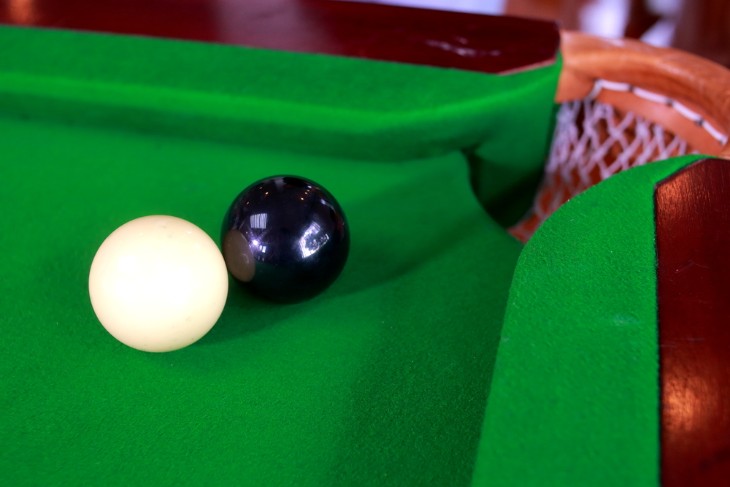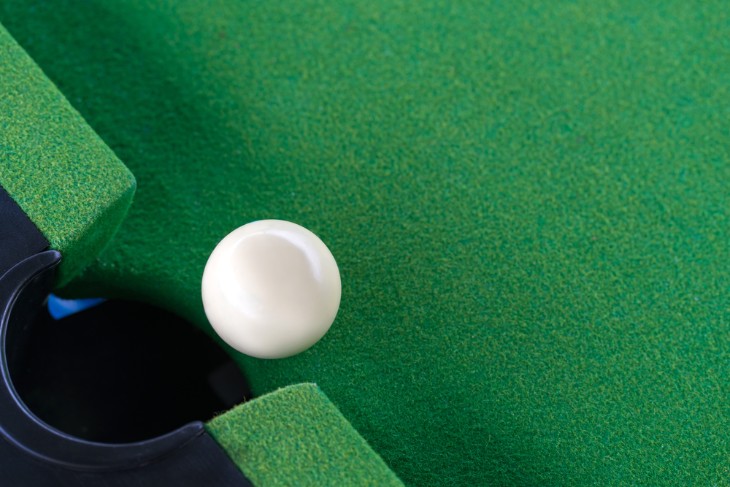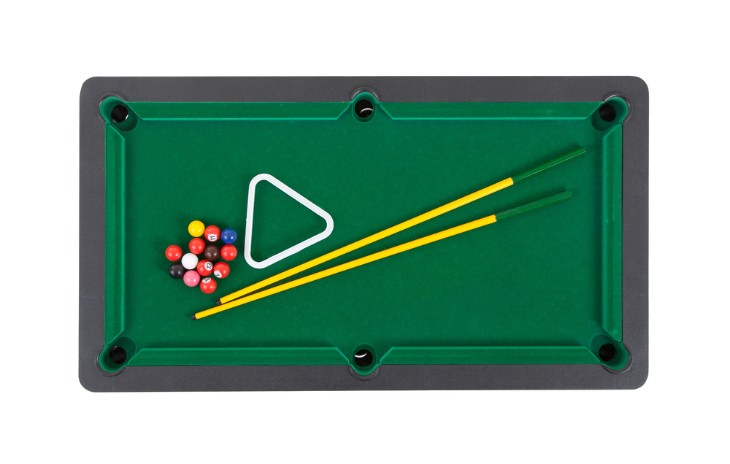- The Standard Design of Snooker Tables: Pocket Count and Layout
- Exploring the Role of Pockets in Snooker Gameplay
- The Impact of Pocket Size and Shape on Playing Strategies
- The Significance of Pocket Number in Differentiating Snooker from Other Cue Sports
- Snooker Table Maintenance: Ensuring Pocket Integrity
- The Evolution of Snooker Table Design: Historical Perspectives on Pockets
- Choosing the Right Snooker Table: Considerations Beyond Pocket Count
- The Psychological Aspect of Pocket Placement in Snooker
- Final Verdict
Snooker, a game rich in history and skill, captivates players and spectators alike with its strategic gameplay and elegant equipment. Central to this game is the snooker table, a beautifully crafted piece of sports equipment that is both functional and aesthetically pleasing.
For those new to snooker or considering purchasing a table, a fundamental question often arises: how many pockets does a snooker table have? This article delves into the design of snooker tables, focusing specifically on their pockets, and discusses why understanding this aspect is crucial for both players and enthusiasts.
The Standard Design of Snooker Tables: Pocket Count and Layout
Snooker tables have a specific design that sets them apart. Each table has six pockets. There are four corner pockets, one at each corner of the table. The other two, known as middle or centre pockets, sit in the middle of the long sides.
These tables are quite large, usually measuring 12 feet by 6 feet. This size gives players a wide area to play on, making the game more challenging and enjoyable. The layout of the pockets is crucial. It affects how players approach the game, plan their shots and score points.
The corners of the pockets are rounded. This shape influences how easily balls can enter the pockets. If a ball hits the corner at the wrong angle, it might not go in. This adds to the challenge of snooker. Players must be accurate with their shots to score.
The size of the pockets also matters. They are not too big or too small. This size makes the game fair. It's not too easy to pot a ball, but also not impossible. This balance is important for good gameplay.
The design of snooker tables, especially the pocket count and layout, is key to the game. The six pockets, placed at specific points on the table, create a unique challenge. Players need skill and strategy to use these pockets to their advantage. This design is what makes Snooker an interesting and popular game.
Exploring the Role of Pockets in Snooker Gameplay
Pockets in snooker are integral to the game's dynamics, transcending their role as mere table components. They are the targets into which players aim to pot balls, with each successful shot earning points and edging players closer to victory.
Impact on Gameplay Strategy: The location of pockets significantly influences gameplay. Players must constantly consider their positions, as this dictates the direction and force with which they strike the ball. Skilled players are always mindful of pocket locations, using this knowledge to inform their shots.
Challenges of Middle Pockets: Situated on the table's longer sides, the middle pockets present distinct challenges. Shots aimed here require heightened precision due to the trickier angles and narrower margin for error. Successfully potting balls in these pockets is often seen as a mark of a player's prowess.
Defensive Play and Pockets: Beyond scoring, pockets play a crucial role in defensive tactics. Players can strategically block their opponent's access to a pocket, hampering their scoring opportunities and gaining a tactical edge. Mastery of using pockets for defense is as vital as for offense.
Pockets are more than functional elements; they significantly shape the strategic and skill-based aspects of snooker. Each shot is a decision influenced by the pockets, adding a layer of strategy that elevates snooker from a simple cue sport to a complex test of skill and tactical acumen. This blend of precision, strategy, and skill in utilizing pockets is a key draw for snooker enthusiasts, transforming it into a captivating game of mental and physical prowess.

The Impact of Pocket Size and Shape on Playing Strategies
In snooker, the size and shape of the pockets on the table significantly influence how the game is played. Smaller pockets, typically found on professional tables, demand more skill for potting balls. Players must be accurate with their shots, requiring careful aim and precise planning. This contrasts with larger pockets often seen on amateur tables, which are more forgiving and suitable for beginners learning the game without excessive frustration.
- Key differences: Smaller pockets increase challenge; larger pockets offer more error margin.
The pocket shape is equally important. Most tables have rounded pocket corners, making potting a ball more challenging. Players need to hit the ball correctly to succeed, emphasizing the importance of good aim and cue ball control.
- Pocket shape effect: Rounded corners demand precision and control.
Players' strategies need to adapt to the table's pocket size and shape. For instance, a table with smaller pockets might necessitate a cautious approach and avoidance of risky shots. Conversely, larger pockets might encourage a more aggressive play style.
- Strategy adaptation: Smaller pockets call for caution; larger pockets allow more risks. On tables with smaller pockets, playing cautiously and avoiding risky shots is often a better strategy. Conversely, tables with larger pockets may encourage a more aggressive approach.
Understanding the impact of pocket size and shape is crucial for players looking to improve their game. By recognizing these differences, they can develop strategies that work well with various table types, a key aspect of becoming a proficient snooker player.
The Significance of Pocket Number in Differentiating Snooker from Other Cue Sports
Snooker is distinct from other cue sports, with its unique aspect being the number of pockets on the table. This key difference influences the gameplay and requires specific strategies and skills.
Snooker and Pool Similarities and Differences:
- Both have six pockets.
- Pool tables are usually smaller, with larger balls, affecting aiming and shooting styles.
- Pool has distinct rules and scoring methods, offering a different playing experience despite having the same number of pockets.
Billiards' Unique Gameplay:
- Often played on tables without pockets.
- Focuses on striking balls against each other and the cushions, eliminating potting.
- Requires a different set of skills compared to snooker or pool.
Carom Billiards' Challenges:
- Similar to billiards, carom tables also lack pockets.
- Players aim to hit their cue ball to touch other balls and table edges in a specific sequence.
- Demands high precision and strategic planning, contrasting with snooker's focus on potting.
Impact of Pockets in Snooker:
- The presence of six pockets defines snooker's gameplay.
- Influences how players strategize, aim, and score.
- Requires development of specific skills to use the pockets effectively.
- The challenge of mastering the six pockets contributes to snooker's excitement and appeal.
Understanding the role of pockets in snooker and how it differs from other cue sports helps players appreciate each game's unique challenges and enjoy them for their distinctive qualities.
Snooker Table Maintenance: Ensuring Pocket Integrity
Proper care of a snooker table is essential for a fair and enjoyable game experience, with special attention required for the pockets. Regular maintenance helps avoid wear and damage, which can impact gameplay. Here are key points to consider:
Inspect the Nets Under the Pockets: These nets catch the balls. Check for tears or stretching, as damaged nets can lead to balls falling through or being caught incorrectly, disrupting the game and potentially damaging the balls or table. Replace any worn nets.
Examine the Rails around the Pockets: The cushioned edges where balls bounce off need regular checks. Loose or damaged rails can affect ball trajectory, altering shot outcomes. Ensure these rails are tightened and repaired as needed.
Check the Pocket Jaws: This is where the pocket meets the table. Chips or wear in this area can prevent balls from entering the pockets correctly, affecting game fairness and enjoyment. Repair or replace damaged pocket jaws for a smooth game.
Clean the Pockets Regularly: Accumulation of dust and dirt in the pockets can slow down the balls and make them dirty. Regular cleaning is necessary to maintain the pockets in good condition.
In summary, maintaining the pockets of a snooker table is crucial for a fair and enjoyable game. Regular inspections, cleaning, and repairs are key to preventing issues and ensuring a well-maintained table for players.
The Evolution of Snooker Table Design: Historical Perspectives on Pockets
The design of snooker tables, including the pockets, has changed a lot over time. These changes show how the game has developed and become more refined.
In the early days, snooker was played on billiards tables. These tables had smaller pockets. This made potting balls more difficult. As snooker became more popular, the tables were designed specifically for this game. The pockets on these new tables were made a bit larger. This change made snooker more accessible and enjoyable for more players.
The shape of the pockets has also evolved. Older tables had pockets with straighter edges. This made the game very challenging, as balls could easily bounce out. Modern tables have more rounded pocket edges. This design is more forgiving, allowing a slightly wider range of shots to be successful.
The size and shape of the pockets are now standardised for professional play. This standardisation ensures that all professional matches are played on tables with similar pocket dimensions. This makes the game fairer and the results more reliable.
The materials used for pockets have improved too. Early tables had simple leather and cloth pockets. Today's tables use high-quality materials that last longer and perform better. This means less maintenance and a better playing experience.

Choosing the Right Snooker Table: Considerations Beyond Pocket Count
When you're choosing a snooker table, there's a lot more to consider than just the number of pockets. The quality and features of the table can greatly affect your playing experience and enjoyment of the game. Here are some key aspects to keep in mind:
- Table Size: The standard size for a snooker table is 12 feet by 6 feet. This size is recommended for a full and proper game experience. However, if space is a concern, there are smaller tables available. Keep in mind, though, that playing on a smaller table can affect the gameplay, making it feel quite different from playing on a standard-sized table.
- Cloth Quality: The cloth that covers the playing surface of the table is crucial. High-quality cloth ensures that the balls roll smoothly and consistently, which is essential for accurate play. The cloth also needs to be durable to withstand regular use, especially in a setting where the table is frequently used.
- Slate Surface: Beneath the cloth lies the slate bed of the table. This slate surface must be completely flat and level. Any irregularities or unevenness can unpredictably alter the path of the balls, which can be frustrating and unfair for players. High-quality slate is a key component of a good snooker table.
- Cushions: The cushions around the edges of the table significantly impact the gameplay. They should have the right level of firmness and bounce to ensure that the balls rebound properly. If the cushions are too soft or too hard, they can interfere with the accuracy and predictability of shots.
- Frame Stability: The frame of the table is what holds everything together. A solid and sturdy frame is essential to support the slate and maintain the stability of the table. A wobbly or unstable table can seriously detract from the quality of the game.
- Room Size: Don’t forget to consider the room where the table will be placed. There needs to be sufficient space around the table to allow players to move freely and take shots from all angles. Cramped spaces can hinder the ability to play properly.
- Budget: Finally, your budget is a key consideration. Snooker tables come in a range of prices. More expensive tables often offer better quality in terms of materials and construction, but there are also good quality options available for those with a tighter budget.
The Psychological Aspect of Pocket Placement in Snooker
The placement of pockets in snooker isn't just a physical feature; it also has a psychological effect on players. The way the pockets are positioned on the table challenges players to think and plan their shots more carefully.
When a player looks at the table, they need to consider the pockets' locations for each shot. This involves a lot of strategy. Players must think about the best way to pot the ball and also how to position the cue ball for their next shot. This constant planning tests a player's foresight and decision-making skills.
The middle pockets, for example, are often trickier to aim for than the corner pockets. This can put extra pressure on players, especially in crucial moments of the game. Players must stay calm and focused to make these shots successfully. This mental challenge is a big part of what makes Snooker an interesting game.
Also, the fear of missing a shot and leaving the balls in an easy position for the opponent adds tension. Players not only have to think about potting the balls but also about playing safe. They need to balance attack and defence based on the pockets' layout.
In snooker, confidence plays a big role. When players are confident, they are more likely to take on challenging shots successfully. The layout of the pockets can either boost or reduce this confidence. Knowing the table well, including the pocket placement, helps players feel more in control.
The placement of pockets in snooker does more than just define the physical play area; it affects players' mental game too. It makes them think, plan, and stay focused under pressure. This mental aspect adds depth to snooker, making it not just a test of physical skill but also of psychological strength and strategy.
Final Verdict
The question 'How many pockets does a snooker table have?' opens the door to a deeper understanding of the game of snooker. The six pockets on a standard snooker table are more than just receptacles for balls; they are integral to the game's strategy, skill, and enjoyment.
As players and enthusiasts delve into the world of snooker, appreciating the complexity and elegance of these pockets, and their role in the game's history and gameplay, enhances the overall experience. The snooker table, with its meticulously designed pockets, stands as a testament to the intricate balance of skill, strategy, and precision that defines this beloved game.
For more information:




.webp)


 (1).webp)




















